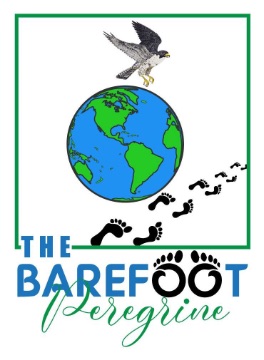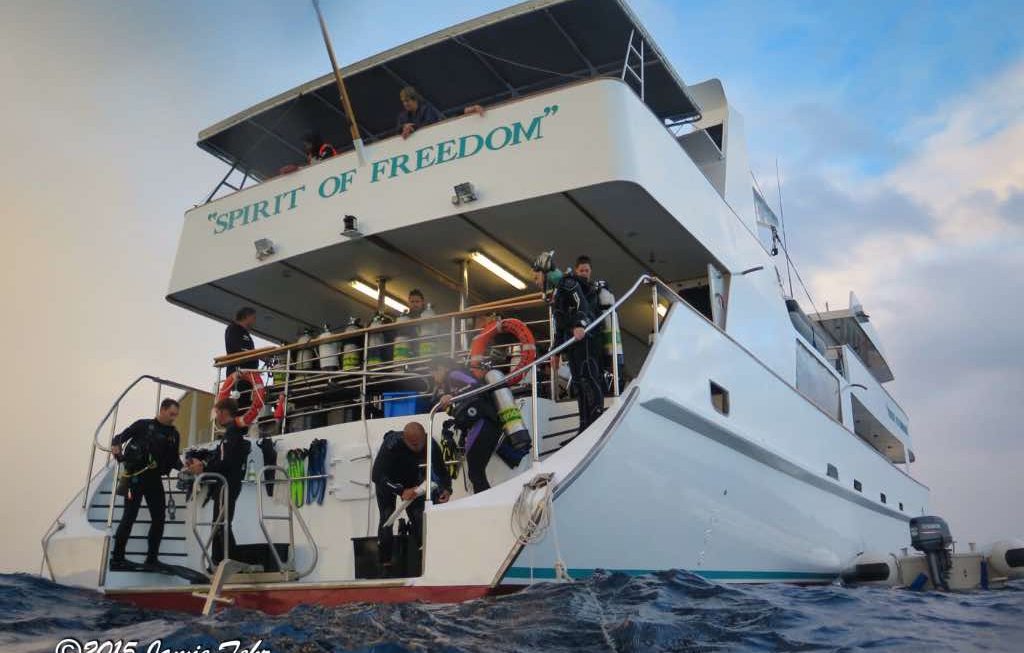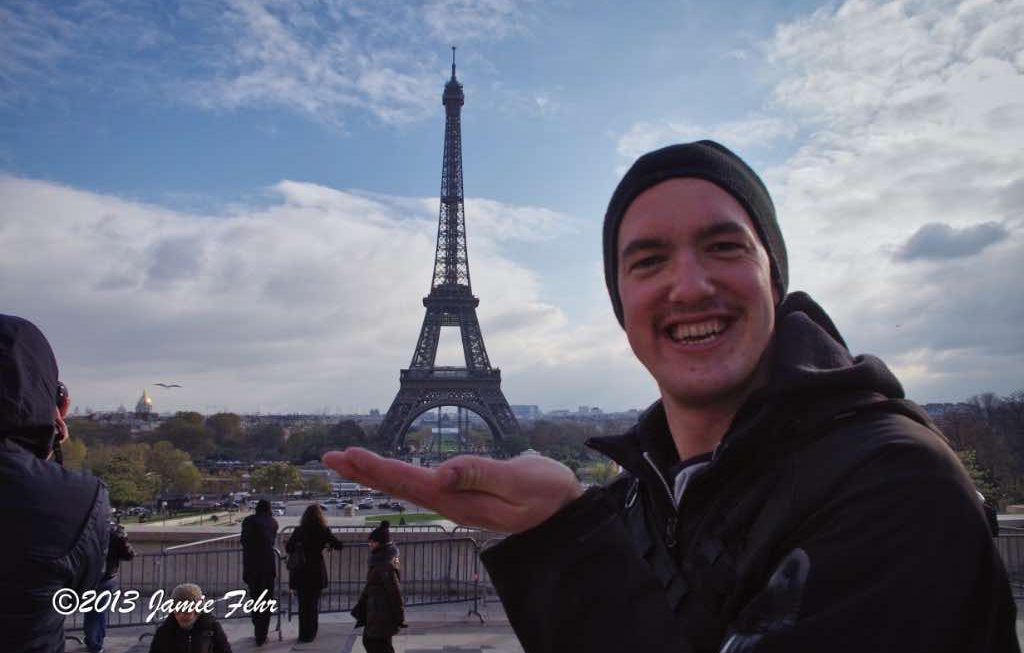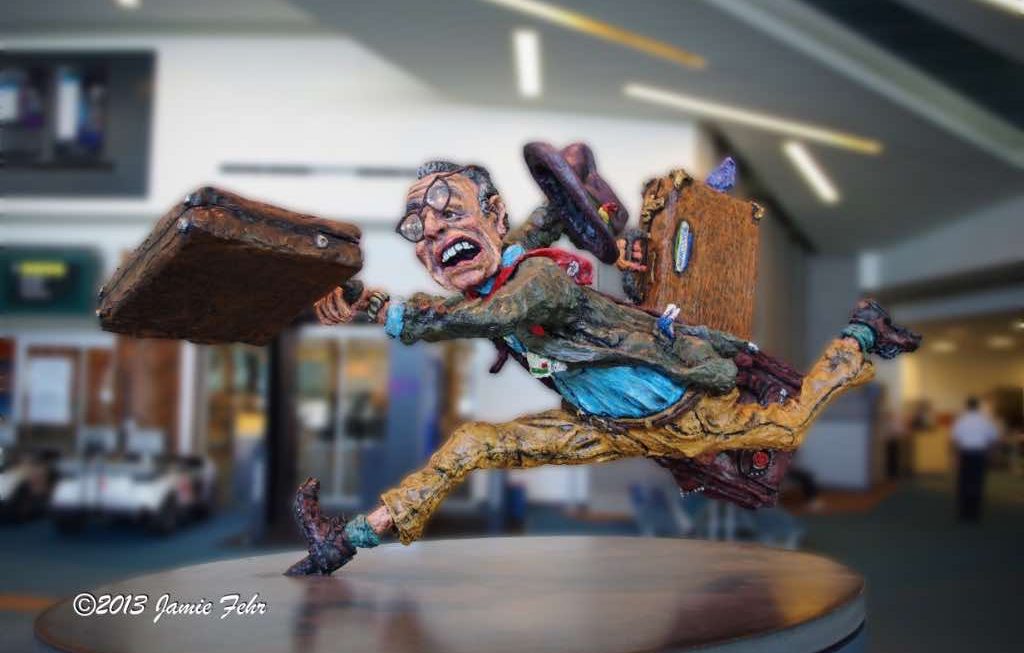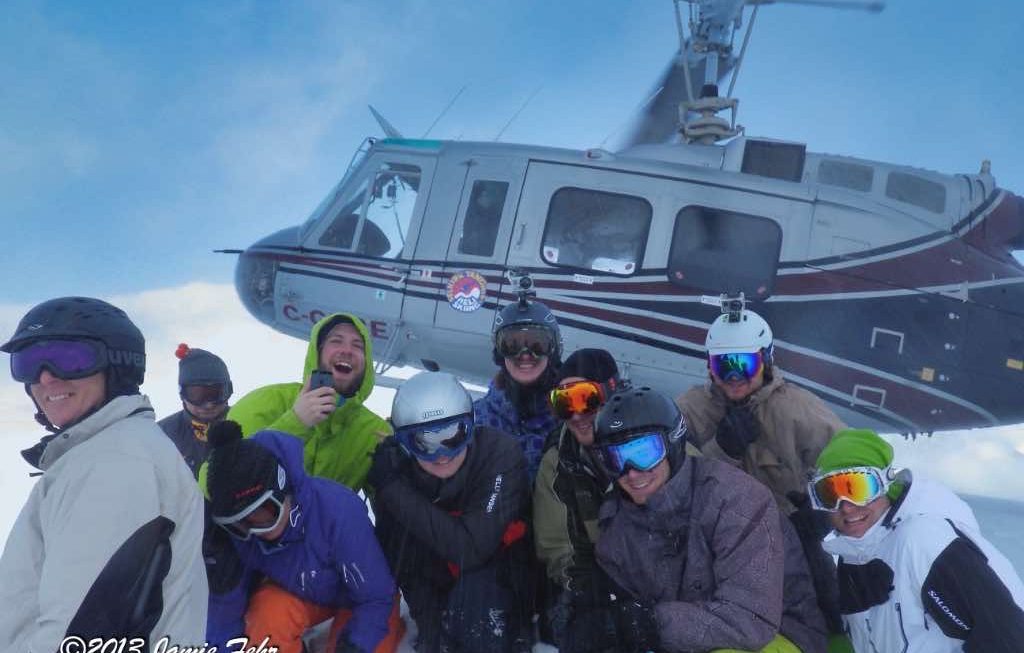With a splash, I stepped off the stern
of the Spirit of Freedom, into the pitch-black ocean. I had my diving “wing” (a type of buoyancy compensator) filled with air, so I bobbed on the surface until my dive buddies and our Divemaster joined me. Once we were all together and ready, we turned on our dive lights then deflated our buoyancy compensators; and almost in unison, we sank into the blackness. This is how we began our night dive.
There were bright lights shining off the boat down into the ocean, which served as a guide for us. As bright as they seemed on the surface, they didn’t pierce very far into the dark water. However, for the entire duration of our dive, any time we looked up, we could see those lights. They kept us close to “home”, and showed us the way back at the end of our dive.
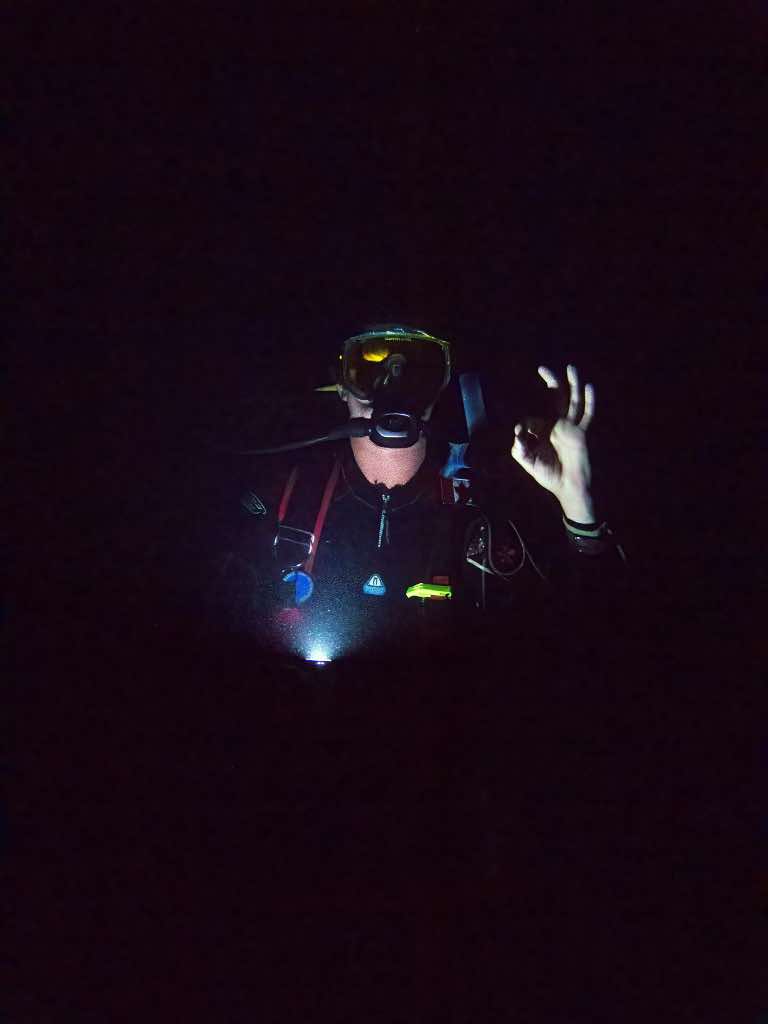
Once we left those lights’ sphere of influence, the water was proper dark. If not for my dive torch, I would not have been able to see my hand when I held it right in front of my nose!
The light beams from our diving torches pierced into the inky darkness. Part of the time, we simply shone them straight out as we slowly swam, but other times we swept them to and fro. The only way we could see anything was when we shone our diving lights on it. Hence, we pointed them here and there, sometimes almost randomly as we looked around, pausing on anything that caught our attention. We always tried to be courteous and not shine our lights in another diver’s eyes.
There is an interesting phenomenon that sometimes occurs while diving at night. It is common to see bigger fish or even small sharks following us and swimming around us, because they are using our light to hunt. When we illuminate their prey under the right circumstances, then sometimes they will rush in and gobble it up. That’s pretty clever! When this activity has happened around me, I have never felt at risk. Although sometimes it is annoying because I just want to study whatever it is I have found. I have discovered that if I let my diving light’s beam rest for too long upon something that both they and I are interested in, then I risk seeing it being eaten. But I don’t always know what they are after, so if I know that they are about; I will sometimes try to keep my torch moving, which can deter their eating activity. The funny thing is that even though they seem to enjoy hunting critters that our lights find, the big fish or sharks don’t like it when we shine our diving lights on them. I guess there’s always a bigger fish that they need to watch out for!
Some of the creatures you might see during a night dive are nocturnal, so you just won’t see them during a day dive. Some of them are beautiful, and others are quite ugly (by my standards). Or you might see familiar creatures doing something unfamiliar; like feeding, sleeping, or something else entirely.
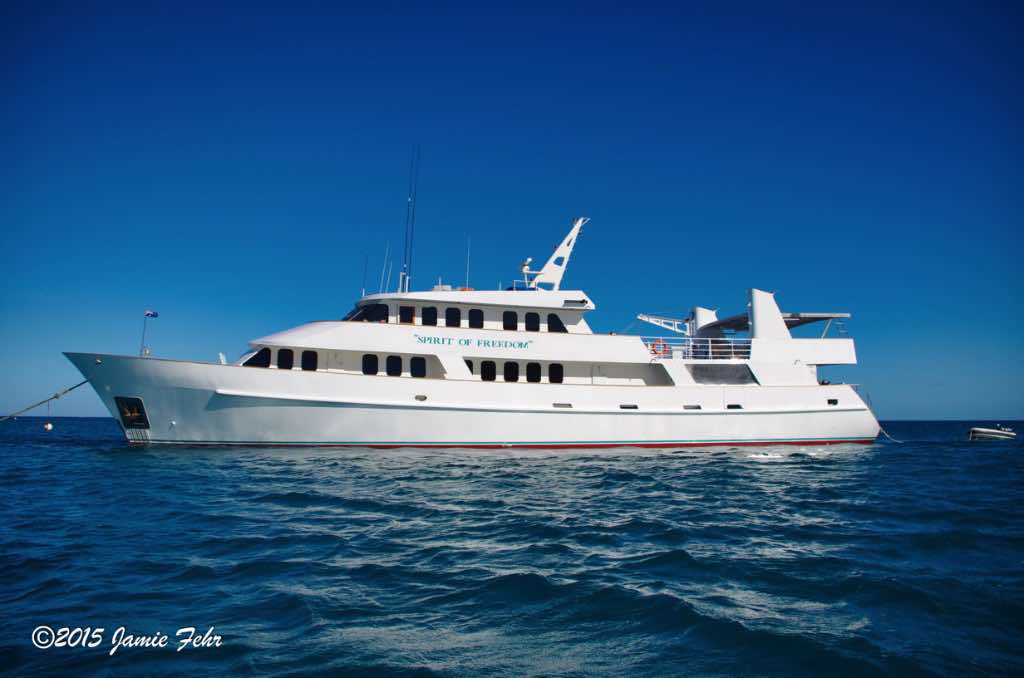

The idea with liveaboard diving boat trips
is that you live on the boat for the duration of your stay, and dive at all the stops the captain makes. Other than your time diving in the ocean; you eat, sleep, & socialize on the boat. Sometimes, depending on the route chosen, there may be one day trip to shore planned. Typically, you’d start with some diving at one particular dive site, often close to the port of departure. Then, usually while you’re eating or sleeping, the captain moves the boat to a totally new dive site. Sometimes it’s close, especially if it’s on the same day. The next day’s dive sites can often be some distance away from the previous day’s sites. As the trip progresses, subsequent diving sites are quite far away from the starting point. Many boats do a large loop, returning to their starting point, but sometimes with a stop near the halfway point with an airfield. Depending on the length of the trip purchased, you may or may not stay on the boat for the entire voyage.
The range of liveaboard diving boats is magnitudes greater than that of the small day-trip boats used by a shore-based dive resort. Because some of the sites are not accessible by any other practical means, liveaboard boats offer a unique chance to see many more diverse diving sites in a typical week-long (or longer) dive vacation.
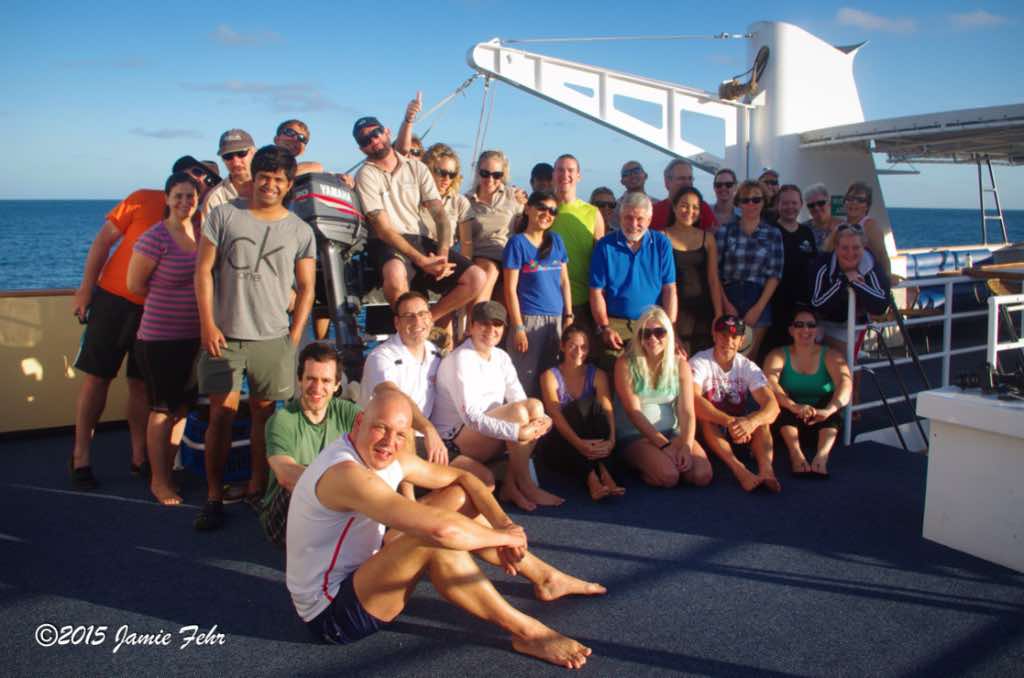
In 2015,
at the time of my trip from Cairns, Australia, only two operators were running liveaboard diving boats to the far north region. Both of them offered a similar schedule and route. Which operator I ended up going with was dependant on who had room for my booking. When I booked, there was only one spot left on the Spirit of Freedom, so I was fortunate to get that spot! See, the Dwarf Minke Whales are only around for a season, and mine was the last booking in that year’s whale season. I wanted to do this trip during that season, so I could see and hopefully interact with the whales! This trip can be booked in one of three ways: 1) board the boat in Cairns, and 3 days later fly from Lizard Island back to Cairns; 2) fly from Cairns to Lizard Island and 4 days later disembark in Cairns; or 3) board in Cairns, stay on the boat for a whole week, and disembark in Cairns. I wanted to experience as much as I could on this excursion, so I chose the week-long option.


Until I took this trip,
I had been diving out on the reef near Cairns, Australia, a couple of times. But sadly, that part of the reef isn’t in pristine health. The decline in the reef’s health and its condition is due to a few factors: the changing ocean & temperature, the cyclones that have ravaged the corals (the Aussies call hurricanes “cyclones”), and most damaging: the boatloads of tourists that cause irreversible damage to the reefs.
The damage caused by people is so sad and preventable. See, we should not touch the corals, because the oils in and on our skin cause damage. I have seen with my own eyes how the uneducated tourists kick and stand on the corals with blatant disregard to any of the instructions that they received. All of those boats do give briefings and instruct their passengers not to damage the corals. But I have seen those instructions completely disregarded by some of the passengers. This damage isn’t done by one or two people doing this once or twice. Such extensive harm to the reef is caused by a percentage of the hundreds of thousands of people who visit per year.
So even though I had been out on the “Great Barrier Reef”, what I saw was just a really big reef that sadly wasn’t all that great!
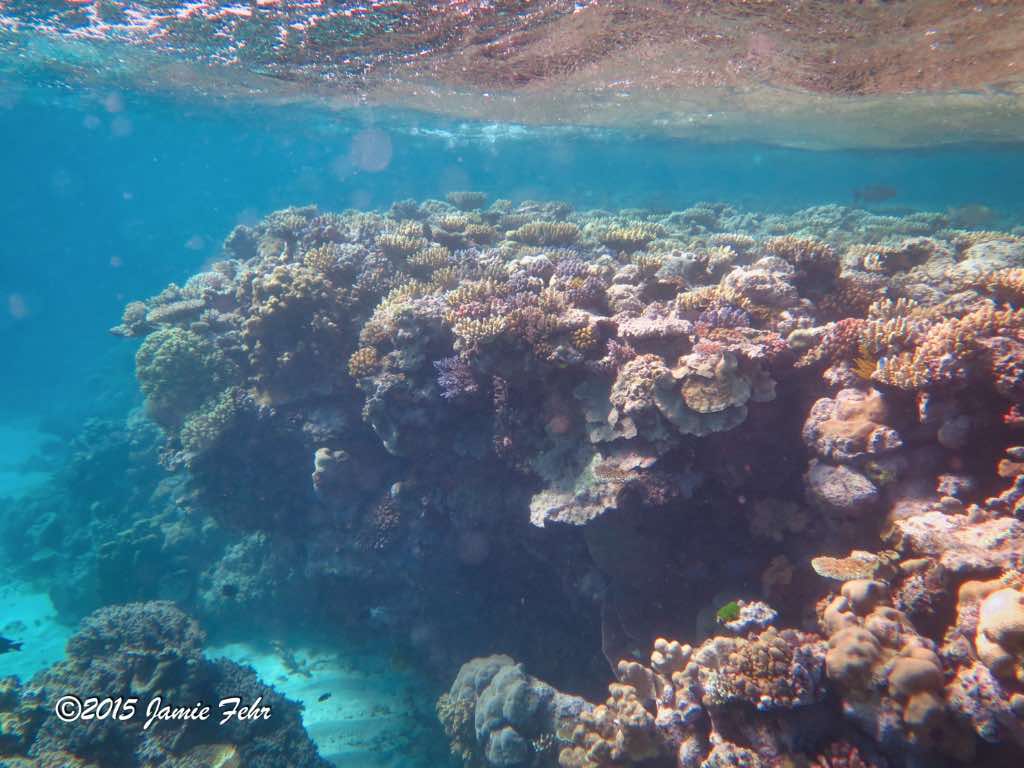

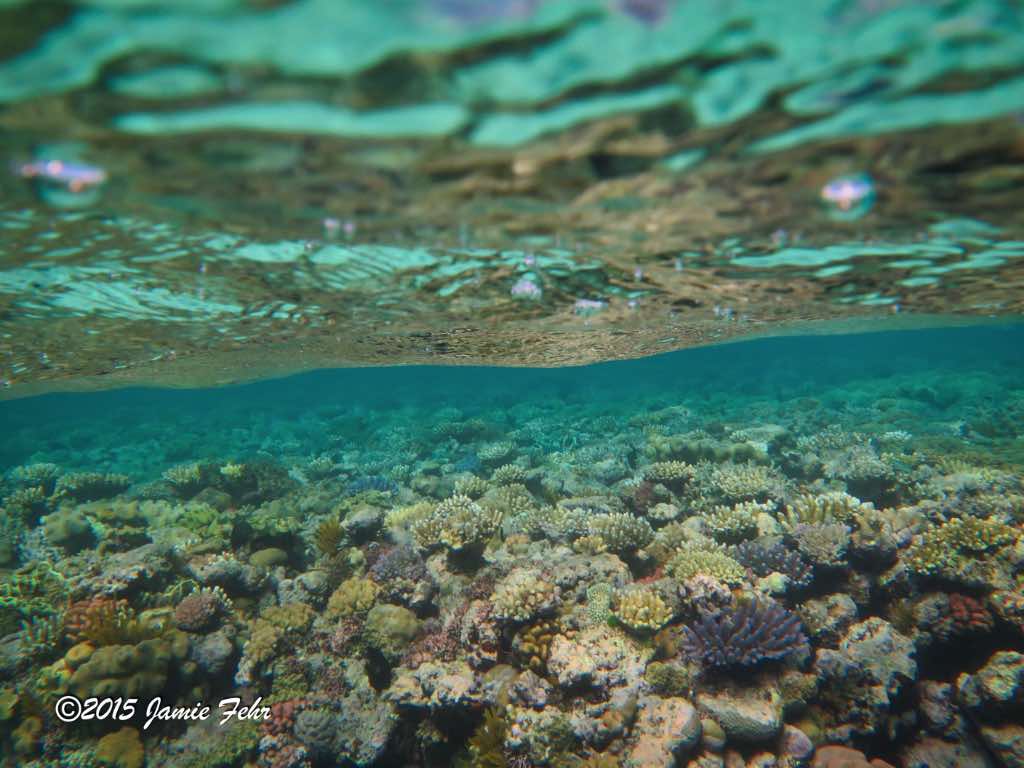
All of that changed while I was on the Spirit of Freedom, as then I saw the Great Barrier Reef, flourishing in health! This is because that boat travels far, far outside the range of all the boats on the one-, two-, or three-day trips that the vast majority of tourists take. Yes, I was a tourist too. But I care a lot about the environments I visit, and I want to see them thrive! This is an attitude that was shared by all on the Spirit of Freedom, both passengers and crew!
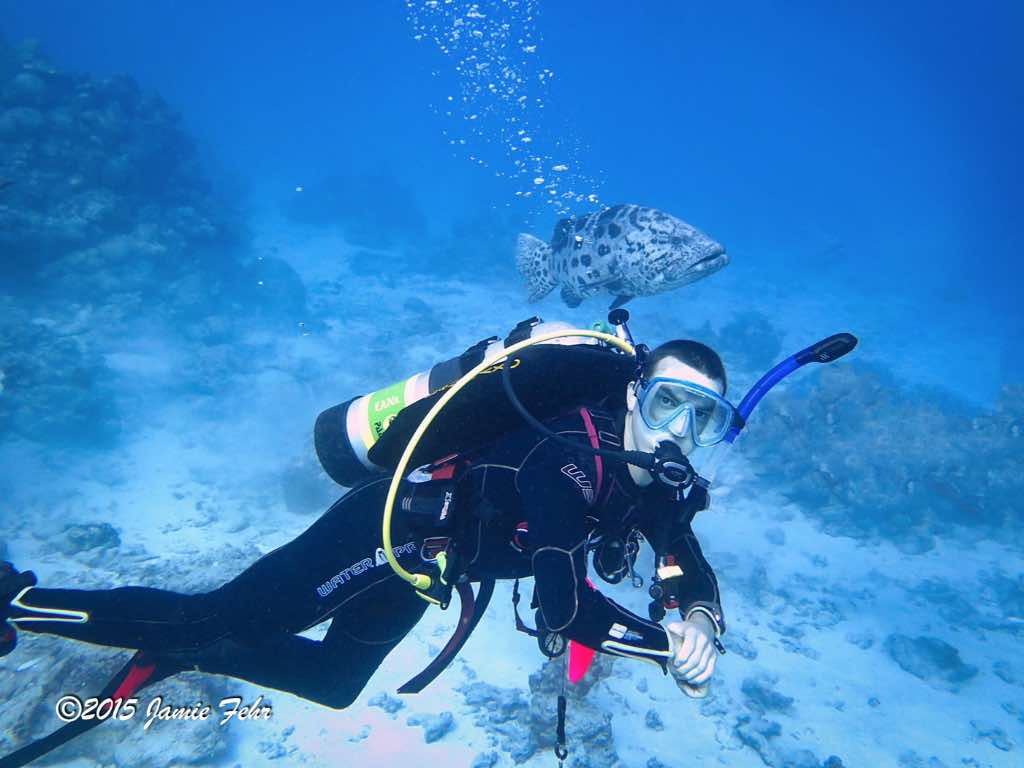
This week was so incredible for me,
as I had the chance to see and do so many new things! One of which was to be really close to some big Potato Groupers, they are also known as “Potato Cod.”
When scuba diving, weights are worn to help counteract the buoyancy from our wet suit and our body. Usually, the amount of weight that we wear is carefully calculated, so we aren’t over-weighted or under-weighted. But there are unique occasions where we may want to be over-weighted; this was one of those times.
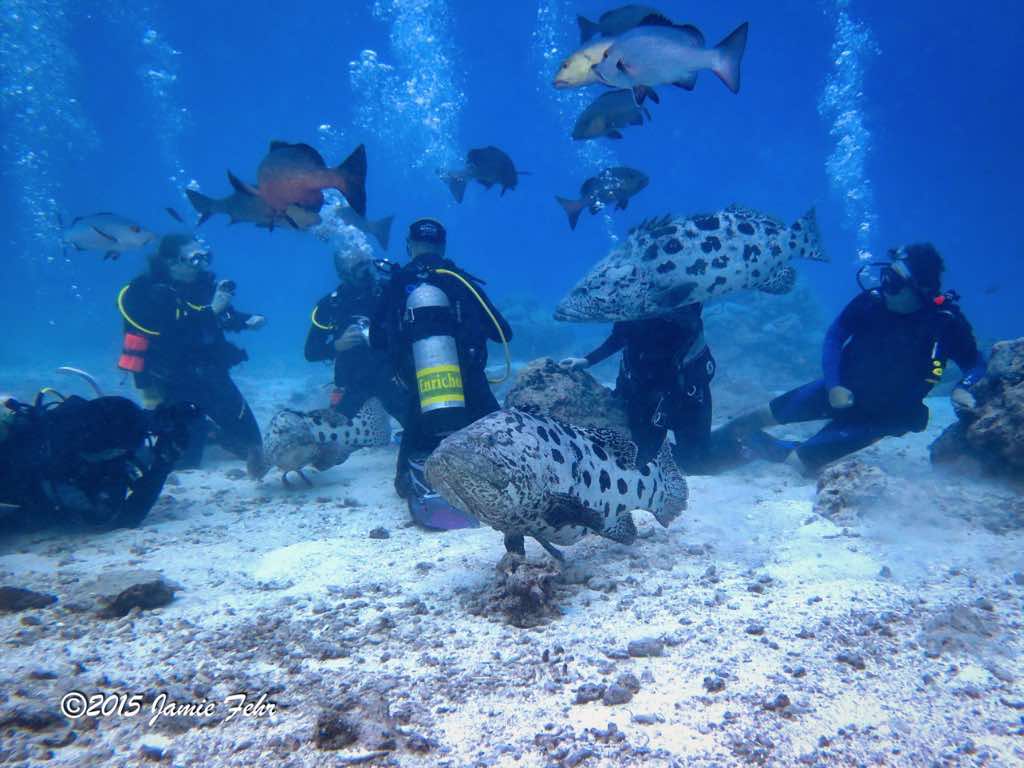
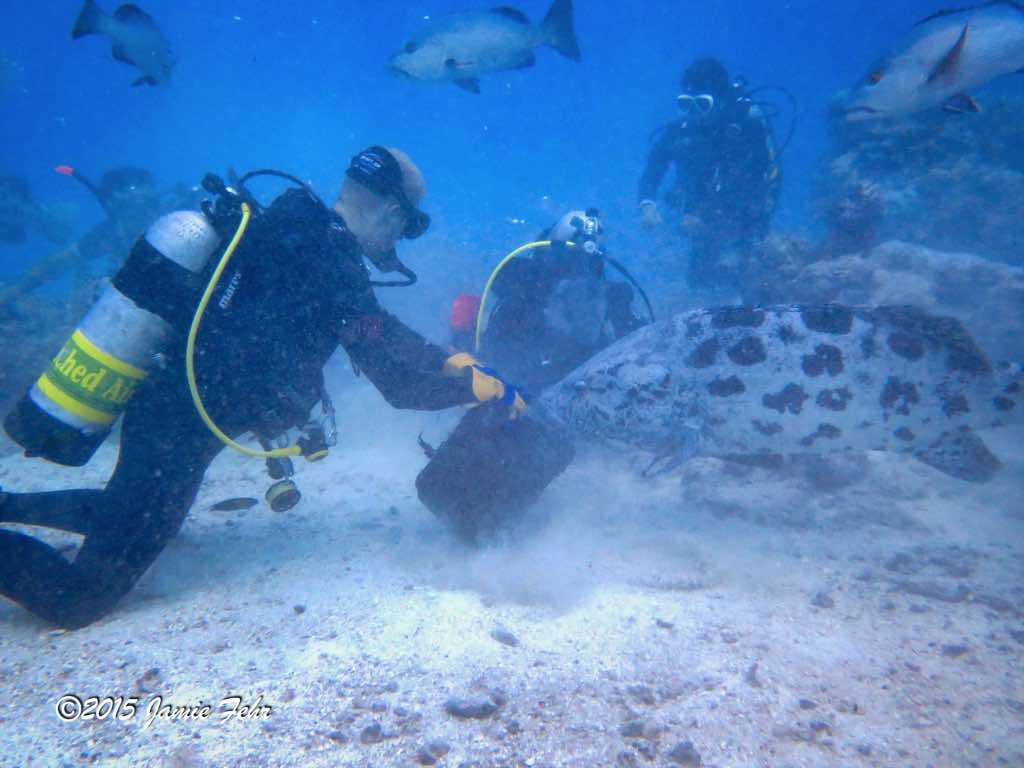
Before starting this dive, we had all been purposely over-weighted, so that we be able to stay kneeling on the bottom during the feed. Our Divemaster, Jack, wore leather gloves and carried a container with small frozen fish for the food. Once we all got down and had stabilized ourselves while kneeling, Jack started feeding the big Groupers. There were about a dozen of them swimming peacefully around us, not bothering us at all. Some of them were as long as we were, so 6′ at least! I was amazed at their size and how ok they were with being so close to us.
Besides the Potato Groupers, the other fish you can see swimming around are Red Bass. They also liked the free food, and often tried to steal it right from the feeder’s hands, before the Potato Cod got a chance to eat it. But the Red Bass have big, aggressive, sharp teeth and often bit the feeder’s hands, scarring their knuckles. The leather gloves offered no protection against that! Between my awe of and focus on the big peaceful Groupers swimming around us, and everything else happening down there; I never noticed the Red Bass’ behaviour. It was only after, when talking to Jack, that I learned of this.
There are so many colorful fish in the ocean; it’s hard to pick just a few to show you.
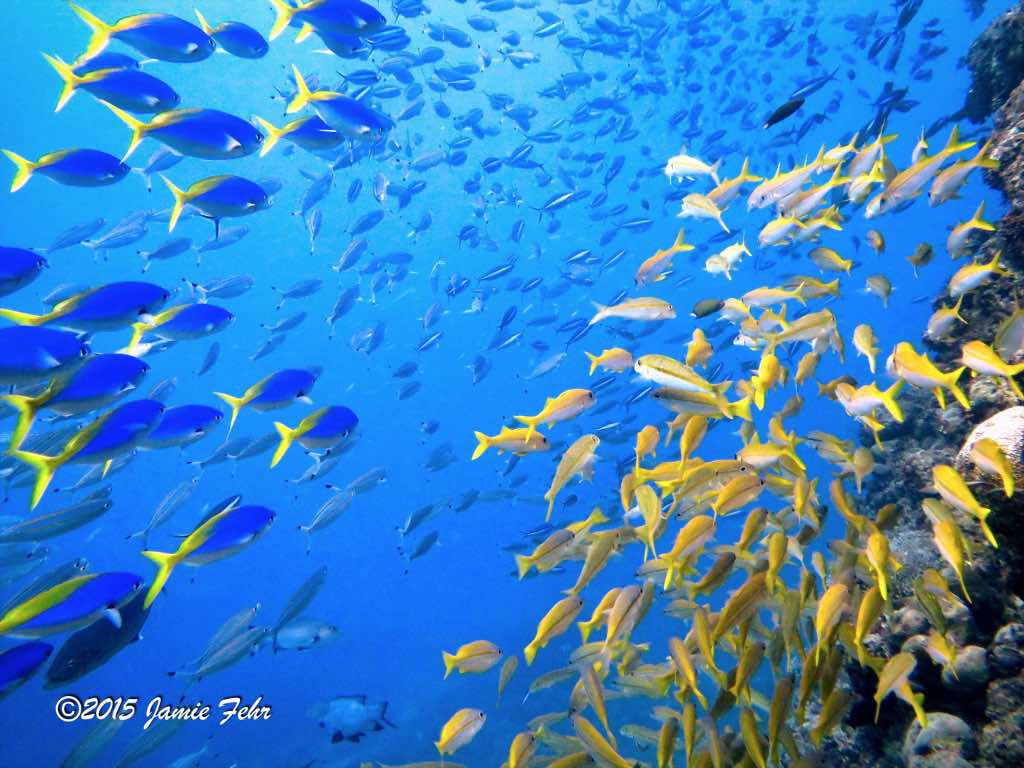

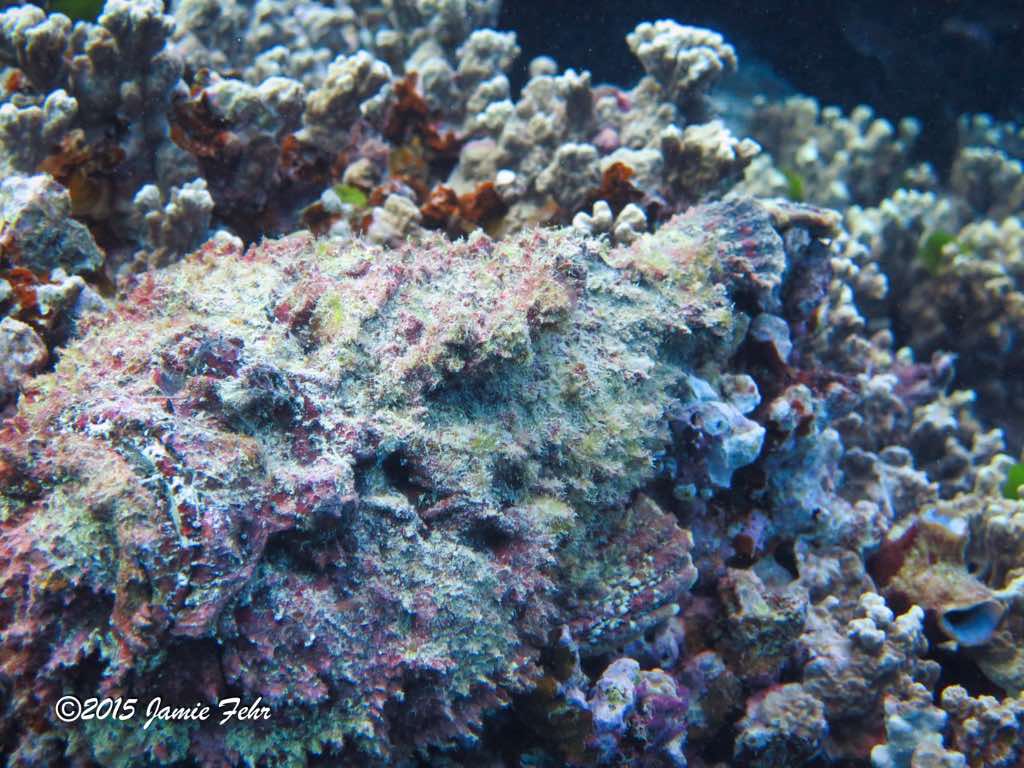


There are many traditions in scuba diving,
but there is one fairly well-known tradition that some people shy away from. In the diving community, it’s tradition to do your 100th dive wearing just your dive gear, and nothing else! Seeing as I would be completing my 100th dive while on this trip, I let my Divemasters on the boat know that I intended to do it “right.” They were good about it, and most of them told me that’s how they had done theirs too. Usually when diving, we were all assigned in groups of four to six divers with one Divemaster. That was all fine and dandy, until my 100th dive. Then it was just my male Divemaster and I. The water was relatively warm, but I still usually wore a 3.5mm wetsuit, so for this dive I was pretty cool! Some people only do a 15-20 minute short 100th dive, just to say they did. My Divemaster asked me if that’s what I wanted. I replied that I wanted to stay down on my dive as long as I could. He was cool with that (he had his wetsuit on lol), so we ended up with a dive time of 47 minutes, which I was happy with. By the end, I was chilled, and was more than ready to get back to the boat and into a hot shower!
Before we started diving, we saw a couple of whales slowly swimming around in our general area. But when we entered the water, they didn’t stick around.
While on this dive, I saw areas with lots of cyclone damage to the corals, and some new life. It was encouraging to see the new life amongst the damaged parts. Near the end of the dive, we also saw two Dwarf Minke Whales, which was really exciting because this was my first time seeing them while I was in the water. But they didn’t come close to us, because they did not like the bubbles we were blowing from our scuba diving gear.
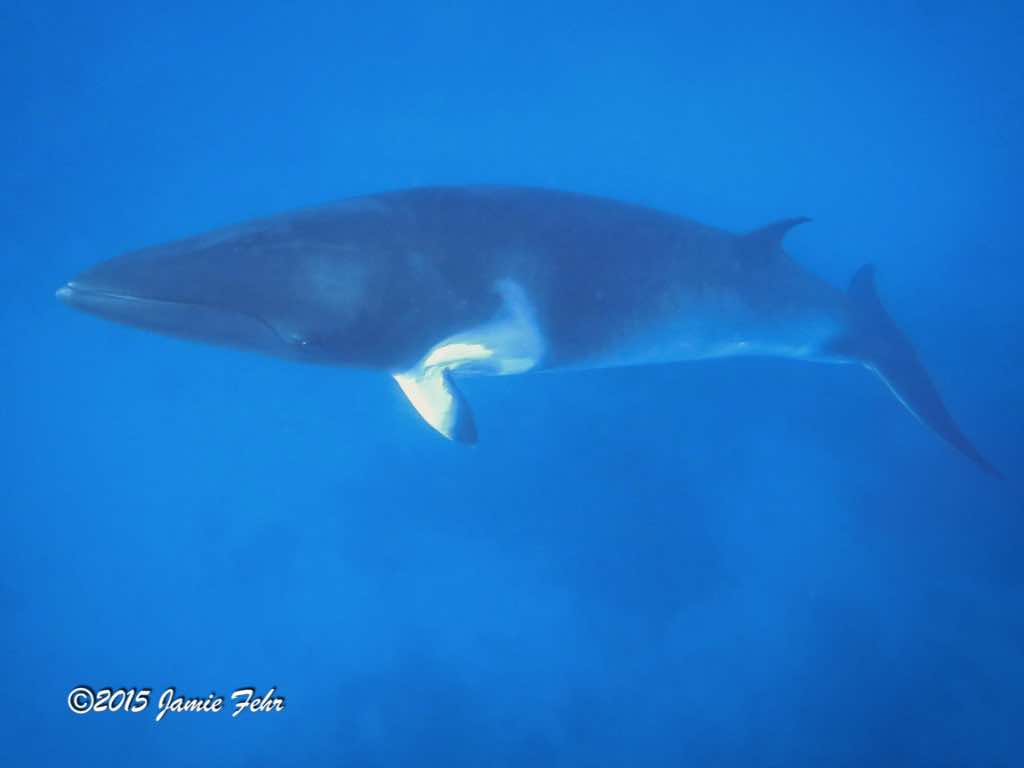
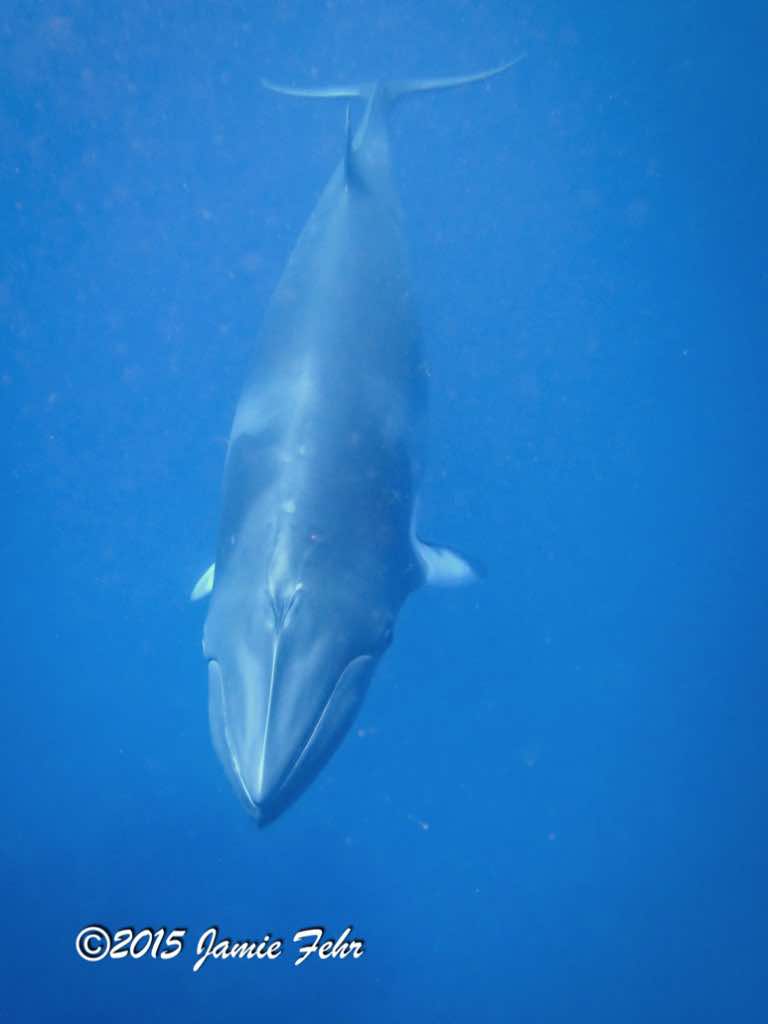
Later that day,
I was able to closely interact with some Dwarf Minke Whales. This was a first for me, as never in my life had I done something like this before. Call me sappy or sentimental, but I felt a real connection to and with these whales. I think a really big reason for this is that these particular whales were discovered the year I was born and because these were the first whales that I ever interacted with.
Even though the Dwarf Minke Whales are the second-smallest whale in the world, my encounters with them still mean a lot to me. (They are the second smallest type of baleen whales, just after the Pygmy Right Whale.)
The trip on the boat was inclusive of all the diving we opted to do, the price didn’t change based on the number of dives we did or didn’t do. So, except for one time, every time there was a dive happening, I went! The only reason I wasn’t diving that one time was so I could snorkel with the whales. Here is how that part of my day went:
We were informed that the whales do not like the bubbles from our scuba gear, so they would keep their distance from us while we were diving. I had noticed this on my previous dive. But when we snorkelled, they came much closer to us. The way our snorkelling was set up, there was a rope with floats on it tied to the boat. The slight current stretched it out behind the boat. We were instructed to hang on to one spot on the rope and stay as still as possible, then the whales would decide how close they wanted to come to us. It was made abundantly clear that under no circumstances were we permitted to reach out and touch the whales, even if they were close enough to do so. (This operator had a special permit from the government allowing them to operate so close to the whales. But one of the biggest conditions was that nobody disturbed the whales, and that included touching them!)
I was all geared up for my next dive, and in line to get in the water. We all knew that the whales were close by (we could see them), so some people chose to go snorkel with them. My plan was to do a short dive, then go spend some time on the rope snorkelling with the whales. I hoped that I would get to have a close encounter with them.
Some parts of our scuba diving gear are consumables. Particularly, the O-rings that seal between the tank and our air regulators. They need to be checked every so often and replaced if signs of wear are noticed. If that inevitable damage goes unnoticed, then eventually the O-ring will fail. When this happens, the highly compressed air in the tank rapidly escapes! If it happens while we are out of the water, it is a 30-second fix. But if it happens while we are on our dive, then our dive is over, as all our precious air is free-flowing out! If that were ever to happen, my dive buddy would shut off my tank and share their air with me while we both safely ascend (or vice versa if his O-ring failed).
While I was in line to get in the ocean, suddenly my tank’s O-ring blew! The diver waiting behind me quickly turned off my tank, and the crew replaced my O-ring. I took it as a sign and decided to forgo that dive. Instead, I just went snorkelling with the whales. It was the best decision of that entire week, as I indeed got my close encounter with some of the whales! As it turned out, when the rest of the group who went on their short dive returned, the whales were put off by their bubbles. That group then attempted to snorkel with the whales, but they didn’t come close again. Hindsight is 20/20, but I am so glad that I heeded my gut and skipped that dive.


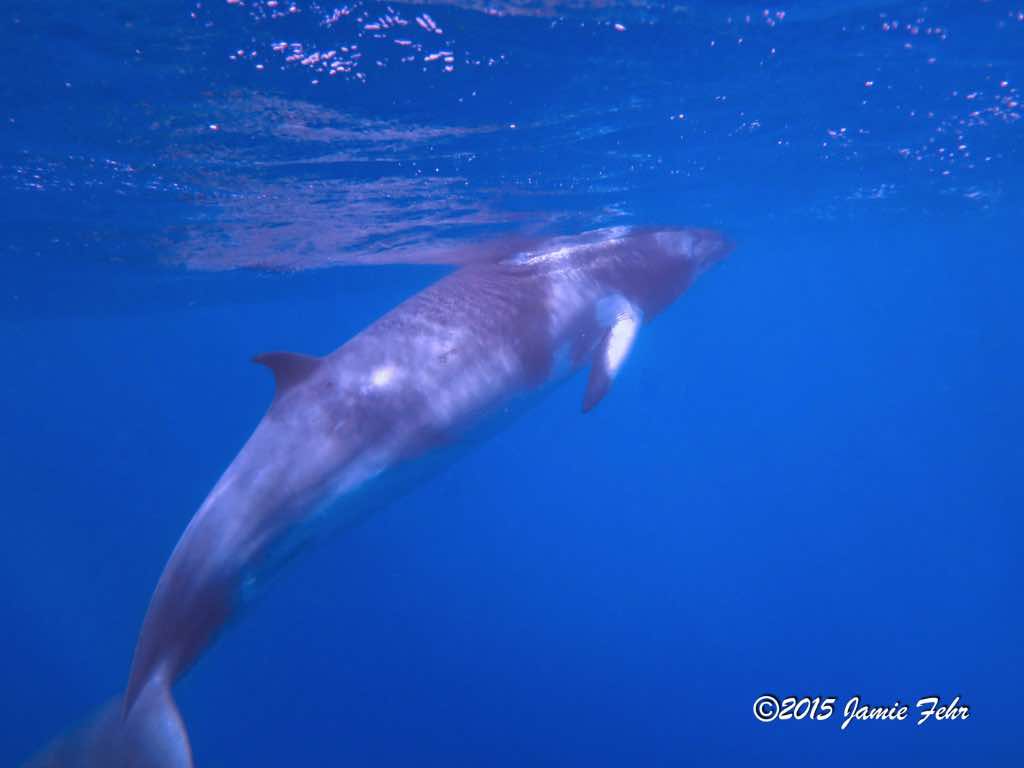
The whales seemed to enjoy spending time close to us and our boat. They stayed close, and dove under us frequently. While I was snorkelling with the whales, I had some approach me as close as 10-15 feet away! I saw four at one time, and later I was told that we had seven whales swimming around our boat, which made for a great day. They have amazing spatial awareness, as they know exactly where their flippers are in relation to other things in the ocean. One was swimming near me towards the floating rope I was holding on to, and I thought that its flipper would possibly catch on the rope. But at the last second, it turned and glided right past without touching.

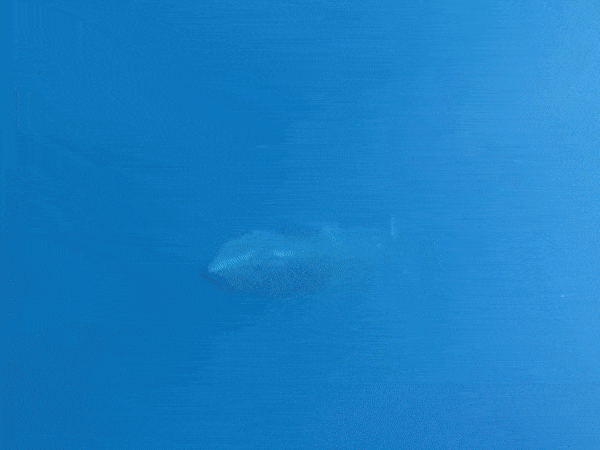
I had the whales swimming under me, and even managed to get two in some of my shots! Sometimes they were so close that I had trouble getting the entirety of their long bodies into a single frame of my pictures!
I spent some of my time trying to get good pictures of the whales (I accomplished that goal), but some of the times they approached me I turned my camera off. Rather than just view them on my camera’s screen, I wanted to fully experience them and create memories with the whales themselves. Looking back at that adventure, I am so glad that I was able to be present in those moments.
The whole experience was surreal and amazing!
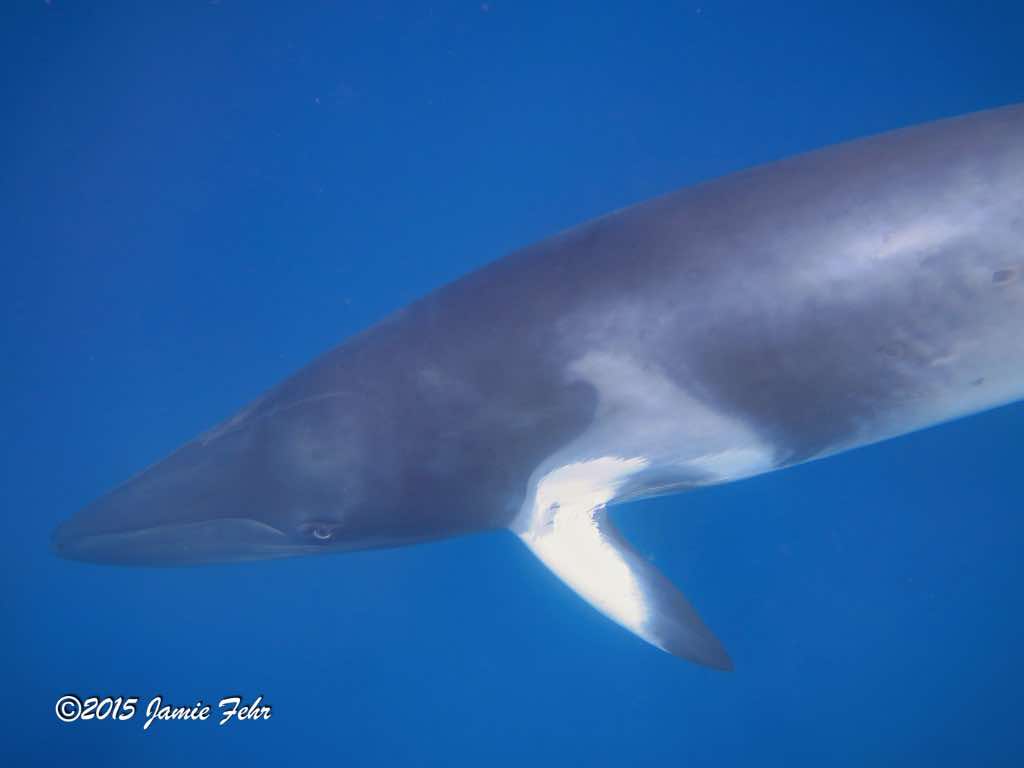
We had Jules, a Dwarf Minke Whale researcher, on board; her sole job was studying the whales. She also took the time to inform us about them, and shared some interesting facts. Here’s one fact that I remember best: Did you know that the patch of white on their sides by their flippers has different coloring and swirls for each individual? And each of their sides is different, they are not symmetrical or identical. Those patches of color are so unique that they are used to identify the individual whales, like how our fingerprints are used to identify us.

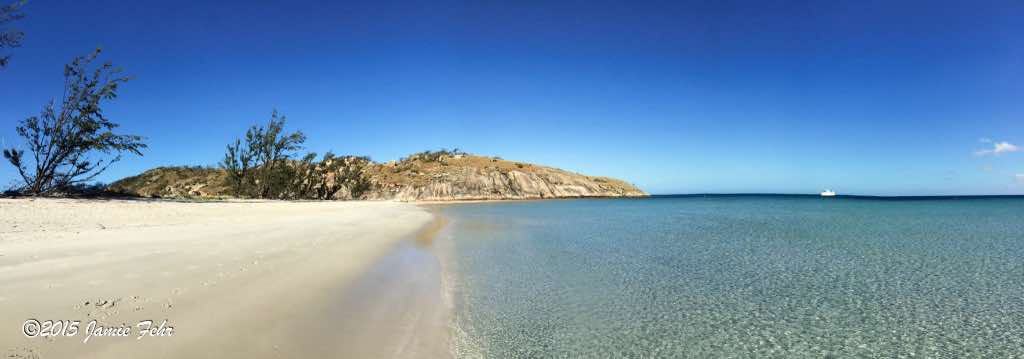
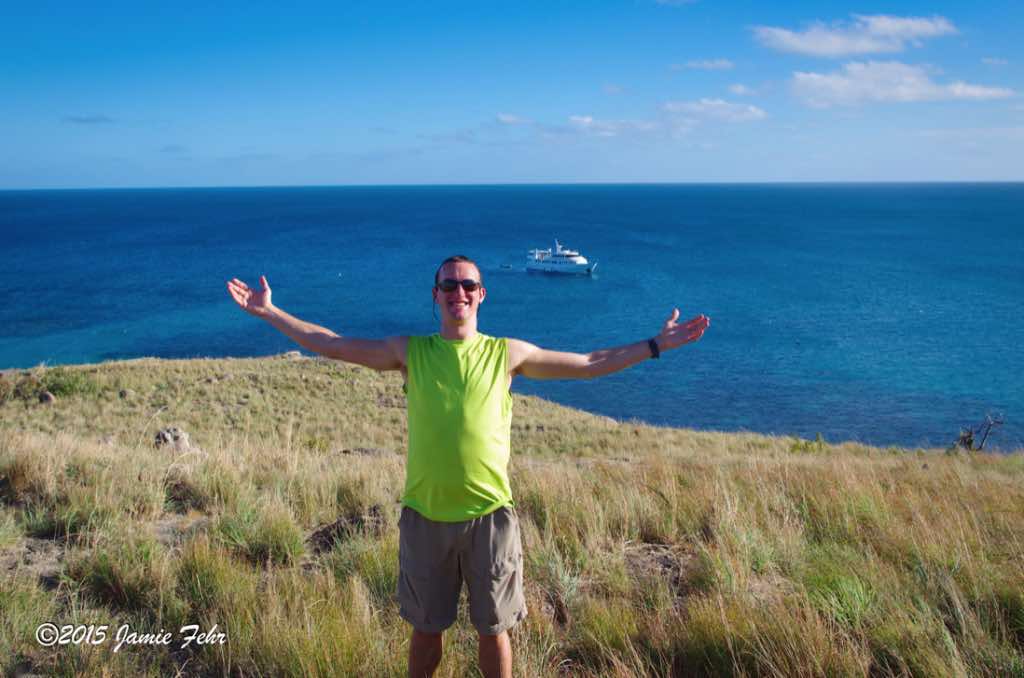
Halfway through our trip,
we stopped at Lizard Island. We moored on the NW side of the island and all of us passengers got rides to the beach in the tenders (multiple trips were required). Then we were guided on a short hike to a lookout point in Lizard Island National Park.

From the lookout, we saw the only resort on the island and the airstrip right next to it. We were told about the resort’s prices, which started at around $2000AUD per night! And this price was just for a room, the prices went drastically up from there for suites and villas. But due to damage from a recent cyclone, they had a sale on for half off! The consensus amongst a bunch of us passengers on the boat was that even at those sale prices, all of us still considered them too expensive for our financial situations!

Our main purpose for coming to Lizard Island was to drop off some of the passengers at the airport and to pick up some new ones. While that exchange happened, those of us staying for the whole week waited back on board. The boat was fully booked for the entire week, so all of the spaces that were vacated were immediately filled again.

We began our journey to Osprey Reef that evening.
At supper, the captain informed us that because the seas would be quite rough, he would make the passage through the night, while we slept. This is a good time to let you know about something unique that all of our bunks had – seatbelts! As a preventative measure, we were all instructed to take motion sickness tablets just before we went to bed and to make sure to use those bunk seatbelts. I did remember waking up a few times during the night, and indeed the boat was moving on the seas a lot! I was sure glad for the belt keeping me securely in bed. Each time, I wasn’t awake for long before I fell back asleep.
But the view that greeted us the next morning, and the subsequent diving, was worth it! Osprey Reef is 24kms long, and at its widest point is 10kms wide. The top of the reef does not stick out of the sea, but it comes close. So there is very shallow and clear water on top of the reef, and it is surrounded by deep blue water. We spent two days and one night at Osprey Reef, during which time I did nine dives.
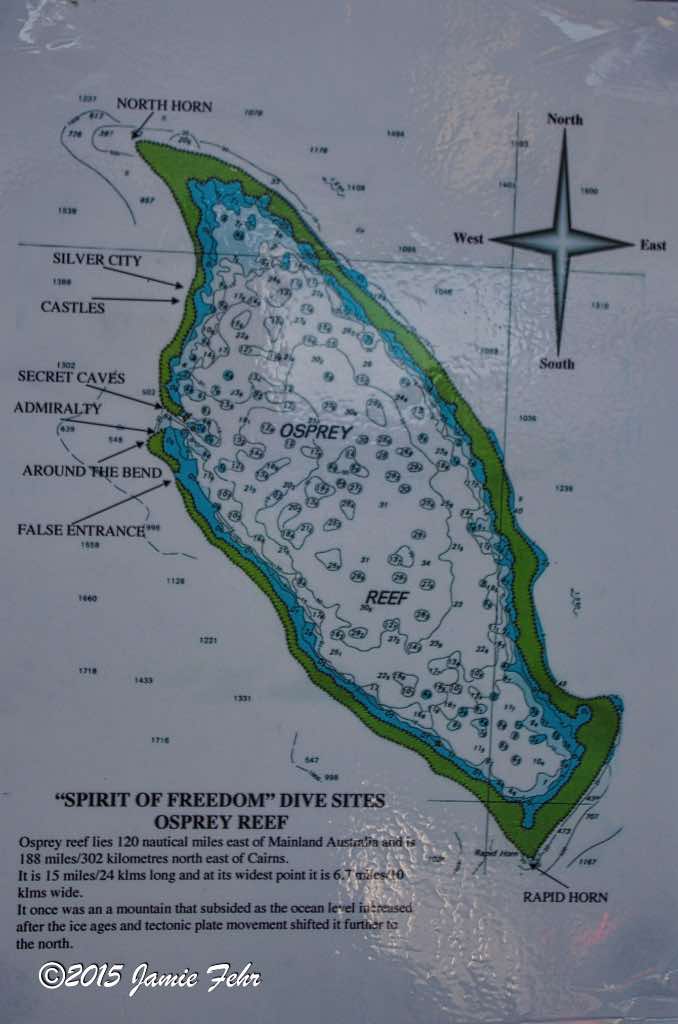
For your reference, here is the Osprey Reef dive site map. In all of the dives that I talk about at this reef, I have mentioned what diving sites we were at.

Our first dive of the day was a deep wall dive, at the diving site called “Silver City.” Our maximum depth was 83 feet, and I never did see the bottom of the wall we were on! I actually have no idea how deep the ocean floor was at that spot.



The aptly named Spirit of Freedom was certainly living up to its reputation. For she enabled me to be here, diving near and freely exploring a unique reef that few people ever have the pleasure of visiting.
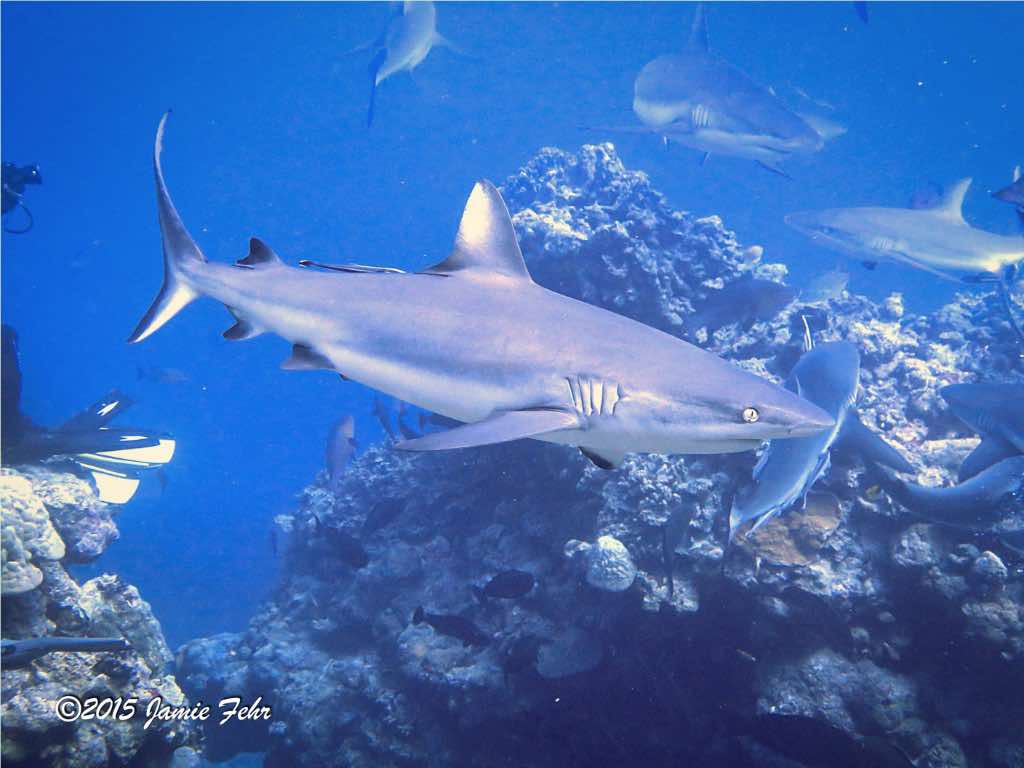


Our next two dives
were at a diving site called “North Horn.” On our first dive there, we viewed a shark feeding!
Before starting this dive, we had all been purposely over-weighted; so that we would for sure stay sitting on the reef while sharks would be swimming in front of and above us. Our Divemasters didn’t want us to accidentally become buoyant and float up amongst those sharks. These precautions were taken because even though the only sharks they expected to come to the feeding were reef sharks, they would be in a feeding frenzy.
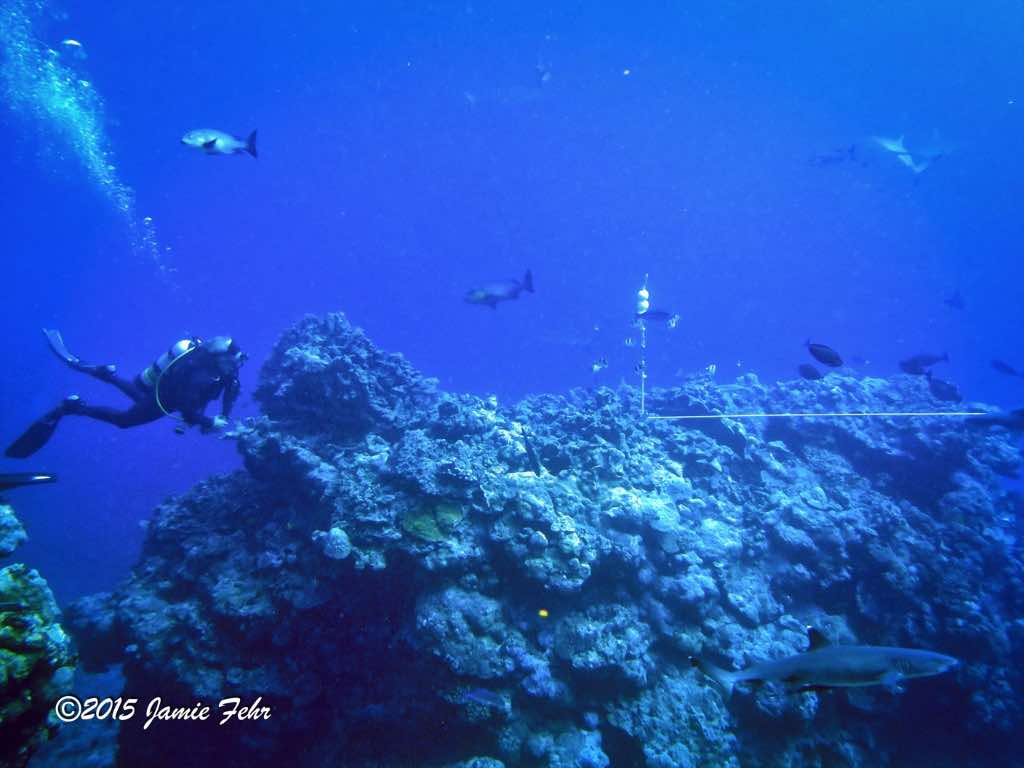

The way the shark feeding was set up, there was a sort of natural coral amphitheater about 40 feet deep where they had us all sitting. In the middle, was another lump of coral. Tied to the top of that middle lump, was a pulley with a rope. One end of the rope had floats on it, and the other end went to a seat on the edge of the amphitheater where our Divemasters sat. Once we were all in position and sitting still, one of our Divemasters released the rope, and the end floated up. Some of the crew were waiting on the surface in the tender, and when they got the end of that rope, they clipped on a small cage. That cage was filled with frozen fish heads and gills all tied to another float. But the door on that cage was still securely closed. Now the Divemasters pulled that cage down, close to the bottom. There had been a few sharks swimming around, like they knew what was coming (I am sure they did too). As the scent emanated from those fish parts, more sharks started swimming in and circling that cage. Soon, we had 30-40 sharks in the water. Most of them were Grey Reef Sharks, and there were a few White Tipped Reef Sharks too. We even had some Red Bass and one Potato Grouper join the throng; I was quite surprised to see that big grouper competing with the sharks for food! But I guess it didn’t see them as a threat, because he was almost as long as them and much bigger around.
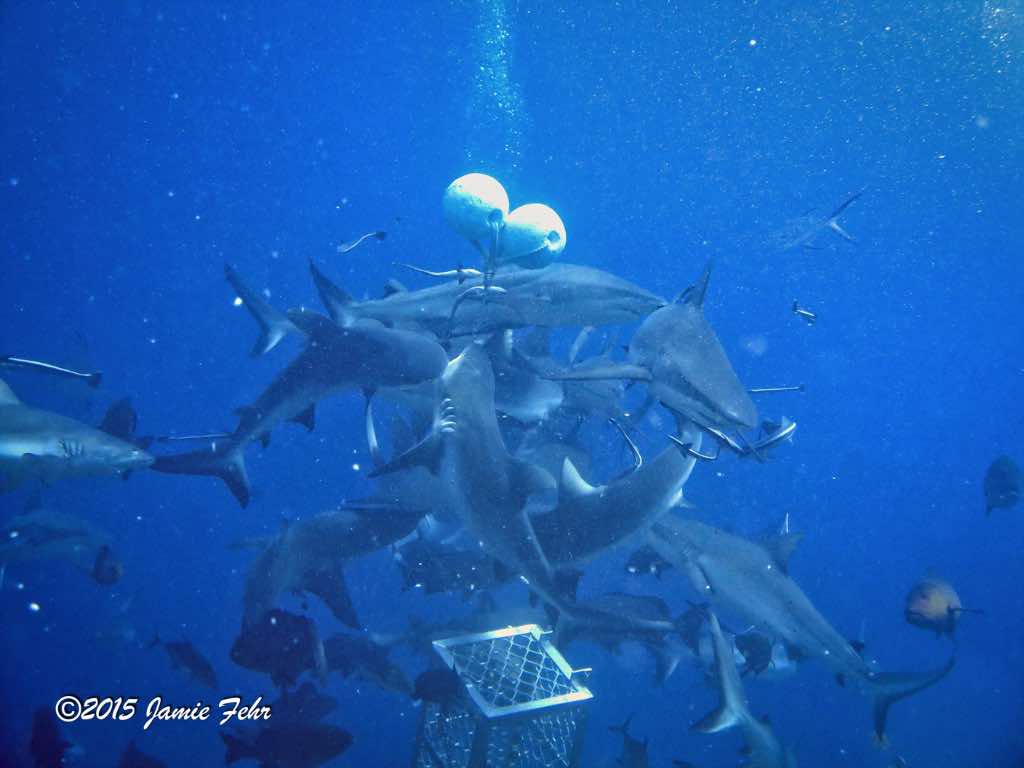
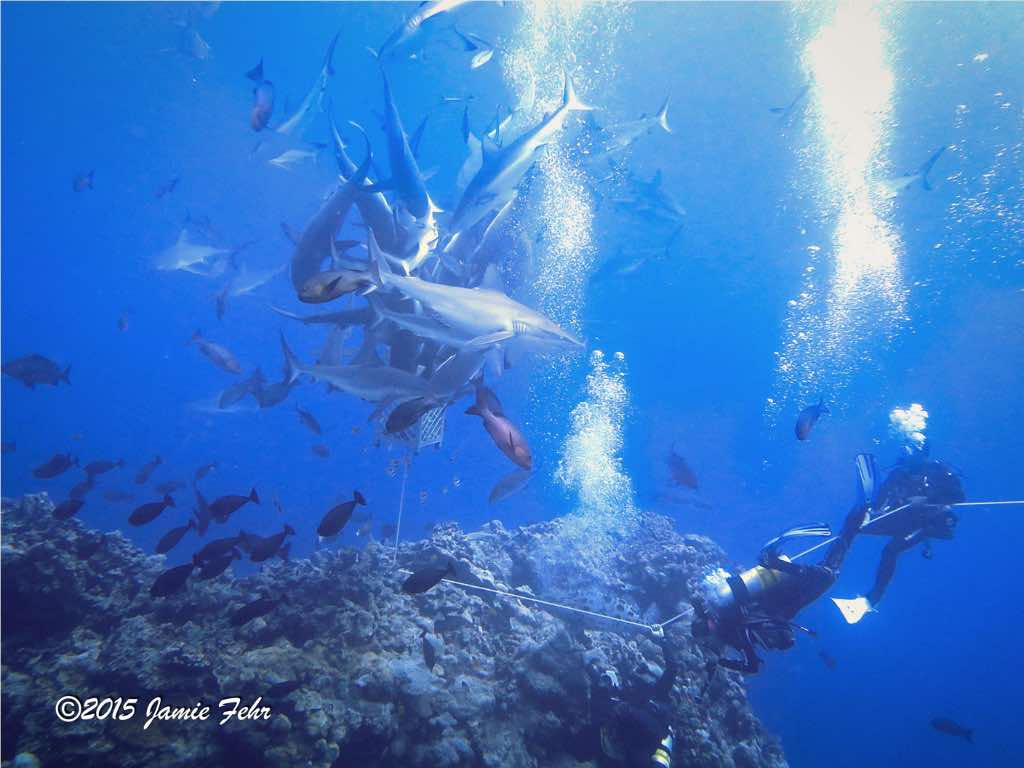

Next, one of the Divemasters pulled another rope which opened the door on the cage, and the frozen food floated up as far as their short rope would allow. Suddenly, all the sharks went into a feeding frenzy! Because the fish parts were frozen, the sharks were unable to simply bite through some and swim away. Now, they gripped the food and shook themselves violently! I knew that sharks don’t have any hard bones like fish and us, rather their skeleton is made entirely of cartilage. What I didn’t know was how flexible this allowed them to be. I remember seeing one shark in particular determinedly thrashing from side to side so hard as it attempted to get some of that fish, that its head got over halfway to touching its tail (it was temporarily U-shaped)! And they didn’t politely take turns, there was a ball of sharks all going at that fish! As the ocean water warmed up the frozen fish parts, soon enough the sharks got their pieces, and once there was none left most of them dispersed rather quickly. They still stayed in the area, but they weren’t concentrated at a food source. What an amazing spectacle to behold!
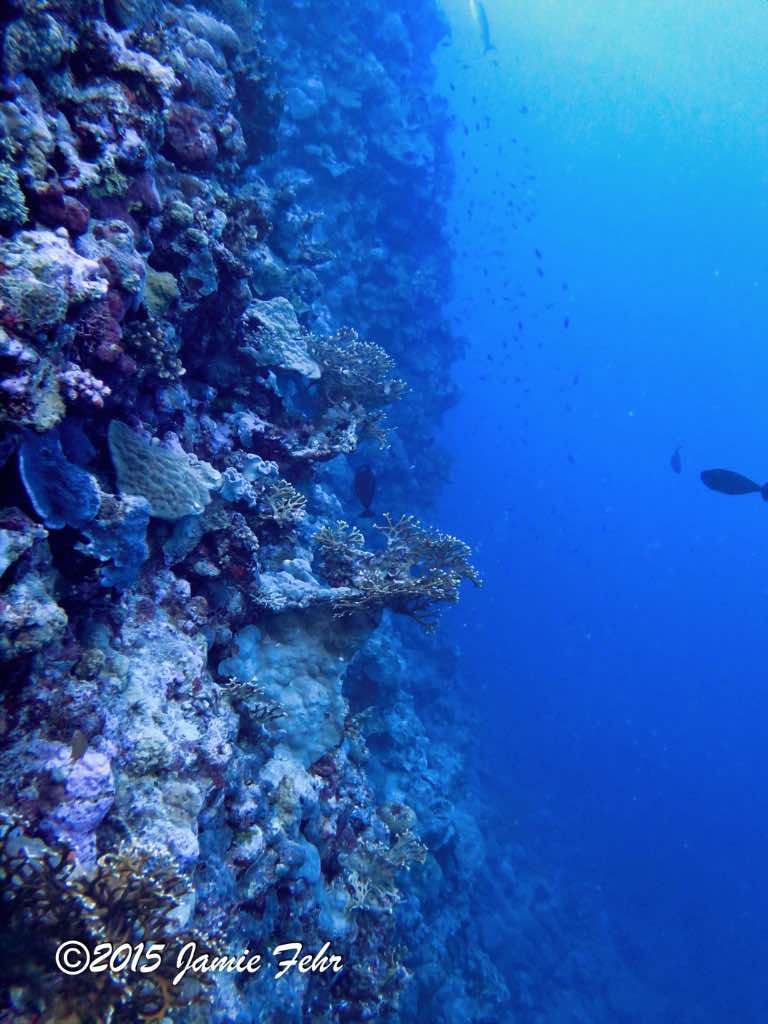
After the Divemasters had returned the cage to the crew in the tender and secured the rope for the next time, we proceeded to continue our dive. We began by swimming along the wall against the current.
When diving, we always want to do our harder swimming (against the current) first, it’s on this part of the dive that we will use the majority of our air. When it’s time to return, we pretty much just drift back with the current and steer, which is much easier.
We hadn’t gone very far when at the edge of my visibility, maybe 20′ or 30′ below us, I saw my first Hammerhead Shark! There was just one swimming there, and it was such a quick encounter that I didn’t have time to turn on my camera and get a shot. But wow! To say that I was thrilled was an understatement!
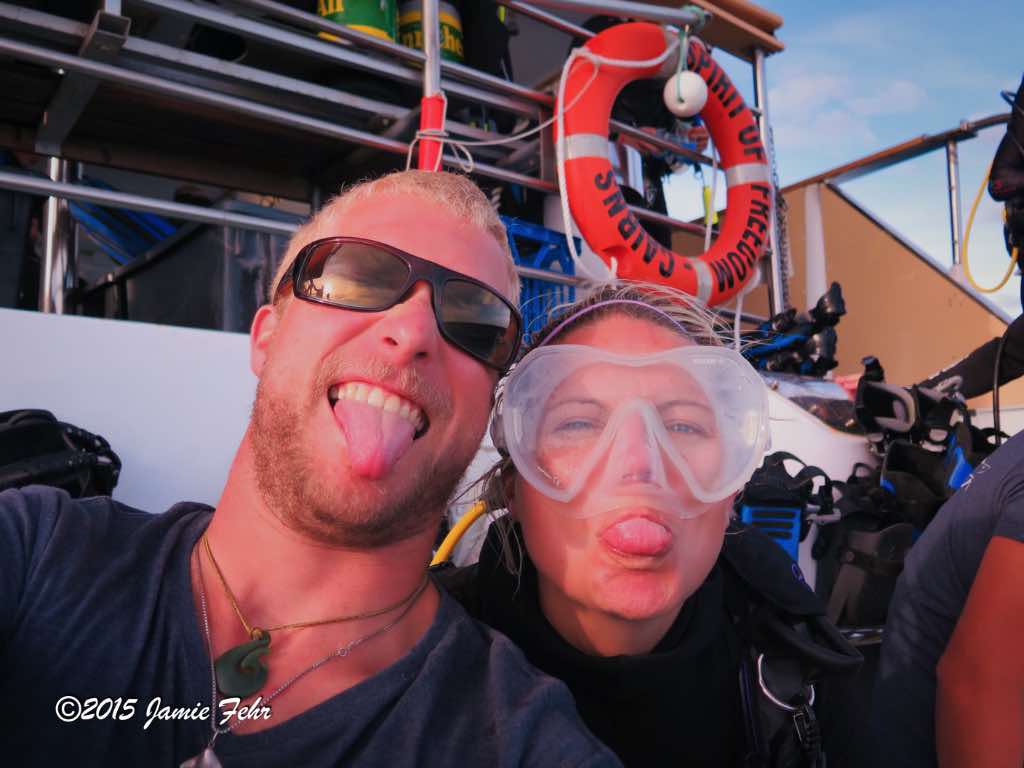
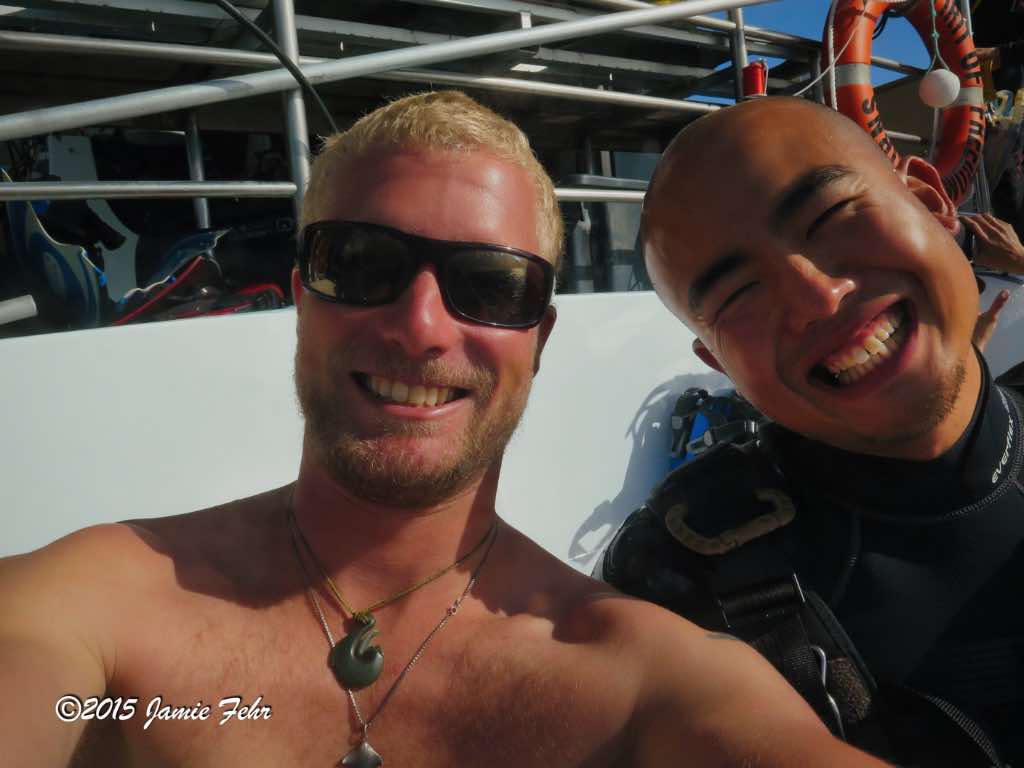
When we stepped off the boat
into the ocean, we did not have our cameras strapped to us, as that can be too rough for the diving housing. After we were floating on the surface, one of the staff on the boat would carefully give us our cameras. And likewise, when we returned from our dive, we always gave our cameras to a staff member on the boat before climbing back on board.
Sometimes, while we weren’t looking, the staff would take funny pictures of themselves that we would find much later (maybe only at home, when we reviewed every shot). I personally appreciate this humor, and am glad to find such surprises that bring back memories of a fun trip!
A large shallow bucket of fresh water was kept near the back of the boat; this is where our cameras were stored before and after our dive. The camera diving housings needed a dip in fresh water after diving because saltwater is hard on metal (and some parts of our diving housings are metal). Once we were back on board, and our dive gear was properly rinsed and stored, we would dry off the camera diving housing before opening it to excitedly review pictures and recharge our batteries.
The “North Horn” diving site is located right at the very northern tip of Osprey Reef.
On our next dive there, we swam on both sides of the point. I found it very interesting that there was a difference in the water temperature between the two sides. (I didn’t write in my diving logbook which was warmer, only that there was a difference.)
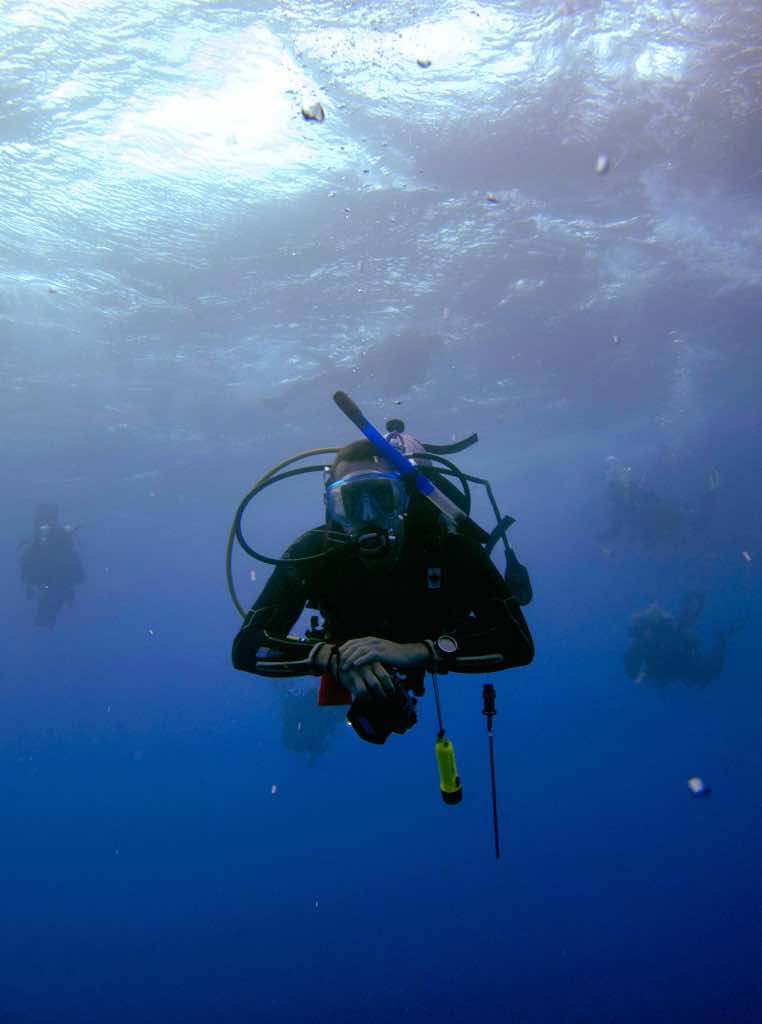
As scuba divers,
when we plan to do some night diving, first we usually plan a dive at that same dive site earlier, during the day. This is so that we can become a little bit familiar with the diving site.
To that end, “Admiralty” was the location of our next two dives.
Regardless of how much (or little) we familiarize ourselves with the site in daylight, we have our Divemasters to help guide us in the dark, which is a great comfort to me. Because I will tell you, I am directionally challenged on land, and it doesn’t get any better for me while diving underwater. However, our awesome Divemasters know these sites like the backs of their hands. I am thankful for their guidance on all our dives – day or night!
While diving at “Admiralty” that night, we found some interesting things.
Our lights are very important to us scuba divers on our night dives. We don’t like to take unnecessary risks, so once we turn on our dive torches, we don’t turn them off until our dive is complete. If for some reason there would be a malfunction, and it wouldn’t turn back on, we would be in trouble! But there are some times when we want to have our diving lights not shine, so we press our still-turned-on lights against our neoprene wetsuits, which blocks all the light.
Shortly after we swam inside a cave, our Divemaster saw some unique fish called Flashlight Fish hanging out near the ceiling. After he pointed them out to us, he instructed us all to press our dive lights against our neoprene wetsuits. After waiting a little while, we saw those Flashlight Fish live up to their name! They have a patch under each eye that lights up via bioluminescence, which is crazy cool! This isn’t seen too often, so it was a special treat! Here’s an article with pictures and a short video of one species of the Flashlight Fish family.
A little later during that same dive, I found a Parrotfish floating pretty much motionless in one spot, surrounded by what looked like a mucous sleeping bag. Once we reached the surface and were able to talk, I inquired about it. I learned that is how Parrotfish sleep, it’s believed that the mucous cocoon protects them from parasites. To see a picture and video of a Parrotfish enveloped in mucous, check out this link. That particular night dive had some pretty neat highlights for me! One thing I love about getting out in nature is that you never know just what you are going to see.

I did three night dives
over the course of this week, one of which was a fluoro night dive. We use a blue diving light and a yellow filter over our mask, then we can see if anything fluoresces (glows). Some animals and plants do, and some don’t; so it’s like a night time treasure hunt with my diving light! For more information about this kind of diving, and to see some pictures, check out these links: At this site, you will see a couple of images shot under normal light, and the same subjects under blue light. And here are lots of fluoro photos, make sure to scroll all the way down.

The last dive we did at Osprey Reef was at the dive site “False Entrance.” Because the currents were so strong, we ended up having a shorter dive, due to quicker air usage. I remember how all the fish were fighting the current too. While diving and trying to hold my own position enough so I could watch, I observed how the fish stayed close to protruding objects. They stayed on the “leeward” side, where they found a spot with less current, so they did not need to work so hard to stay there.
Osprey Reef was the furthest away that we travelled, hence it was also our turn-around point. The remainder of our trip was spent travelling south, back towards Cairns.

As we made our way south,
we stopped at some diving sites that were new to me, and also a couple of the places where we had been diving earlier in the week on the way up. They were just as exciting to dive this time around!
The entire trip, there was this one kind of fish that I had been trying to get a good picture of. I did not see them at all of our dive sites, but they were present at quite a few of them. Finally, on our last day, I got a good picture of this fish. Once I was able to identify it and look for it in the fish ID books, it turned out to be a Six Stripe Wrasse.

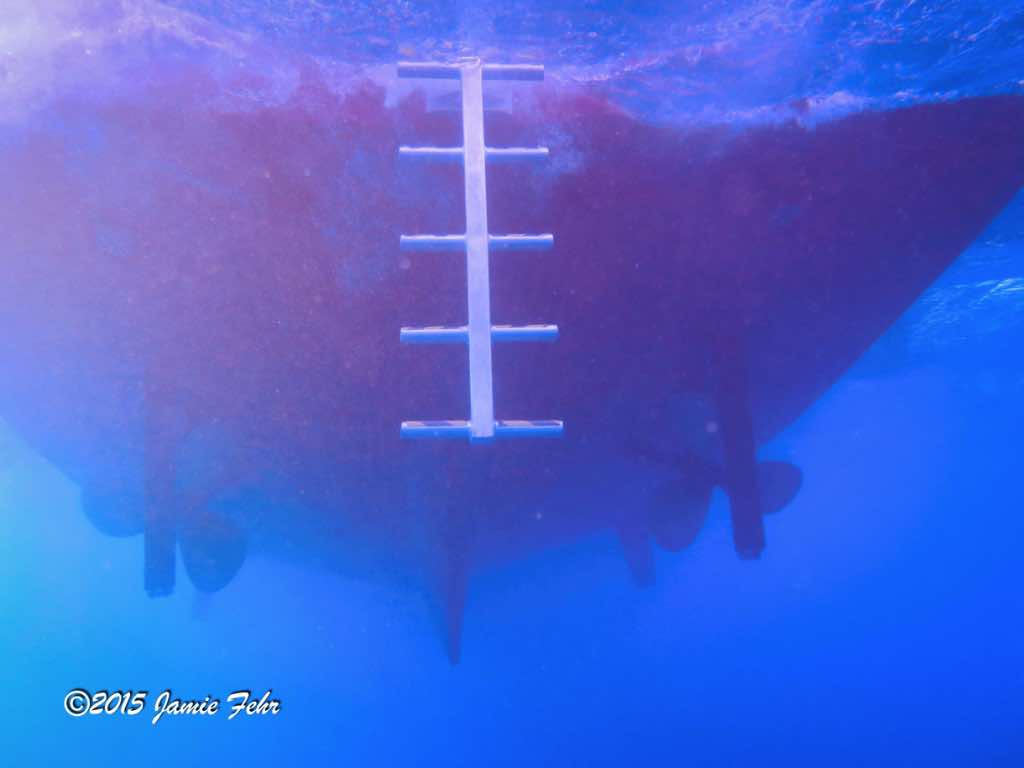
Here are some of the views that all of our dives ended with: our boat & tender as seen from below, and the ladder we climbed to get back on board. The ladder is also where we got re-introduced to gravity. See, while we are diving, our weight is countered by our buoyancy, so we feel weightless. I find it to be a wonderful feeling! But alas, when the dive ends, then we feel heavy again…until the next dive!
Fun fact: NASA astronauts use a giant pool to train for being weightless in space.

Taking underwater pictures while diving
is quite challenging, because everything is in motion. The currents and/or waves are moving me, and if they are strong then I am only holding the camera with one hand while I am using the other to try to stabilize myself. Therefore, the camera is moving, and of course, the fish are moving! Sometimes the fish are patient and let me get close for a good shot, and other times they are skittish and won’t let me get near at all. And lighting is all different than land-based photography. Because the blue water absorbs the red spectrum of the light, artificial light is required if we want to see the true colors. Otherwise, everything has a blueish tinge. When we are just swimming around looking, our diving light will suffice. But for photography, we need a flash (or strobes). And because our flashes are only so powerful, if the subject is too far away to be properly lit up, then the colors will still be off.
It takes an art, and some skill to get pictures where everything turns out. Usually, there are lots of shots taken, and hopefully one is good. Thankfully, it is all digital so the ones that are not good can easily be deleted!
The other thing to keep in mind is that it’s very easy to lose focus of the group when taking pictures. One can become so engrossed in trying to get that perfect shot, that you lag behind the group, or let it leave you altogether. This is where having an alert and careful dive buddy helps. They can keep you in check, and look out for you when your attention isn’t on the group. You will also miss many things that the Divemaster is pointing out to the group, because you’re focused on that one fish at a time in front of your camera. Personally, I mostly try to have my camera on me in case I come across something interesting, because diving with the camera “full time” completely changes your dive. I also like to see things through my eyes, and stay present in the moment, rather than just viewing all the highlights on my camera’s screen.
Here’s a small gallery of some of the interesting underwater creatures I was able to get good pictures of while diving during this week:
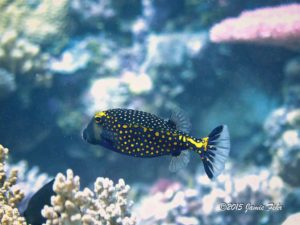
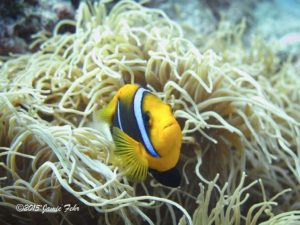
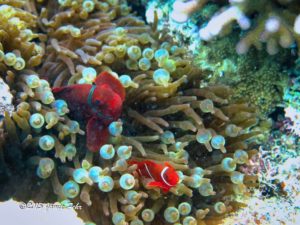
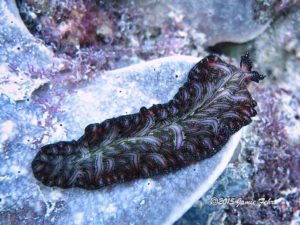
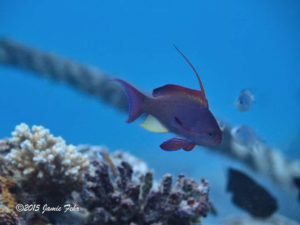
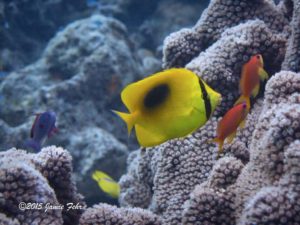
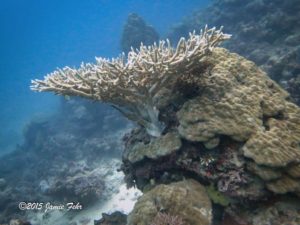
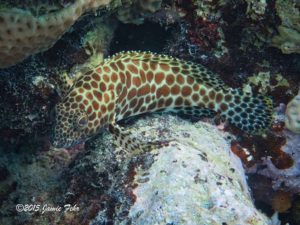
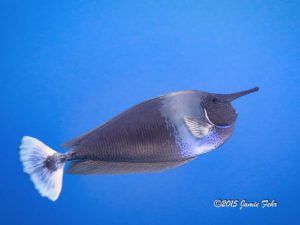
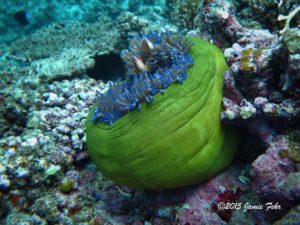
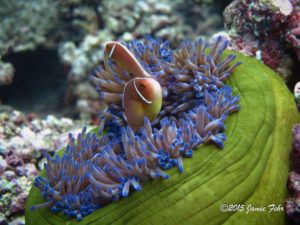
This trip
was nothing short of amazing, and I hope to one day board the Spirit of Freedom again! I enjoyed all of the diving and the new experiences!
I have not mentioned the food yet, but James (our chef) kept us well-fed with delicious food!
Here’s the incredible crew of eleven who took such great care of me (and the other guests) for the week I lived aboard the Spirit of Freedom; plus the Dwarf Minke Whale researcher (she’s in a blue shirt, not in a uniform like the crew.)
Back Row: Mike, Sota, Tibo
Middle Row: Kai, Sarah, Matt, Cassie, Jack, Captain Tony, Chef James
Front Row: Charlotte, Jules (Dwarf Minke Whale researcher)
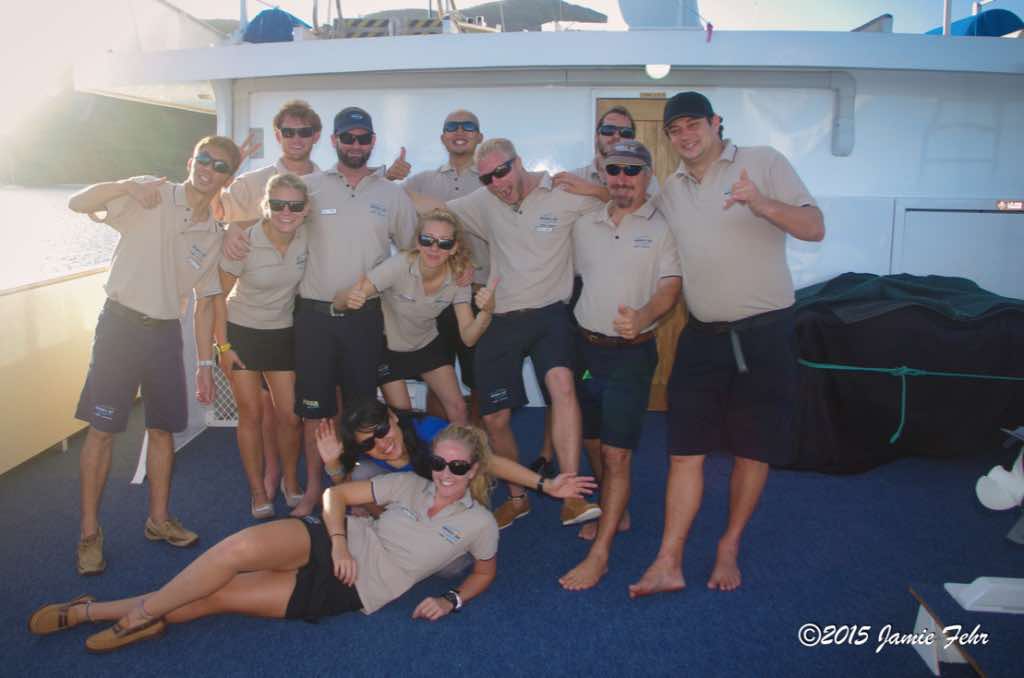
During our last supper on board, I made a toast to the awesome crew, in which I thanked them for all their hard work and told them that they exceeded my expectations!
If any of these crew members read this post: cheers, and thank you so much for the part you played!
I’ll close with the sunset we saw during our last evening on board, it was gorgeous!
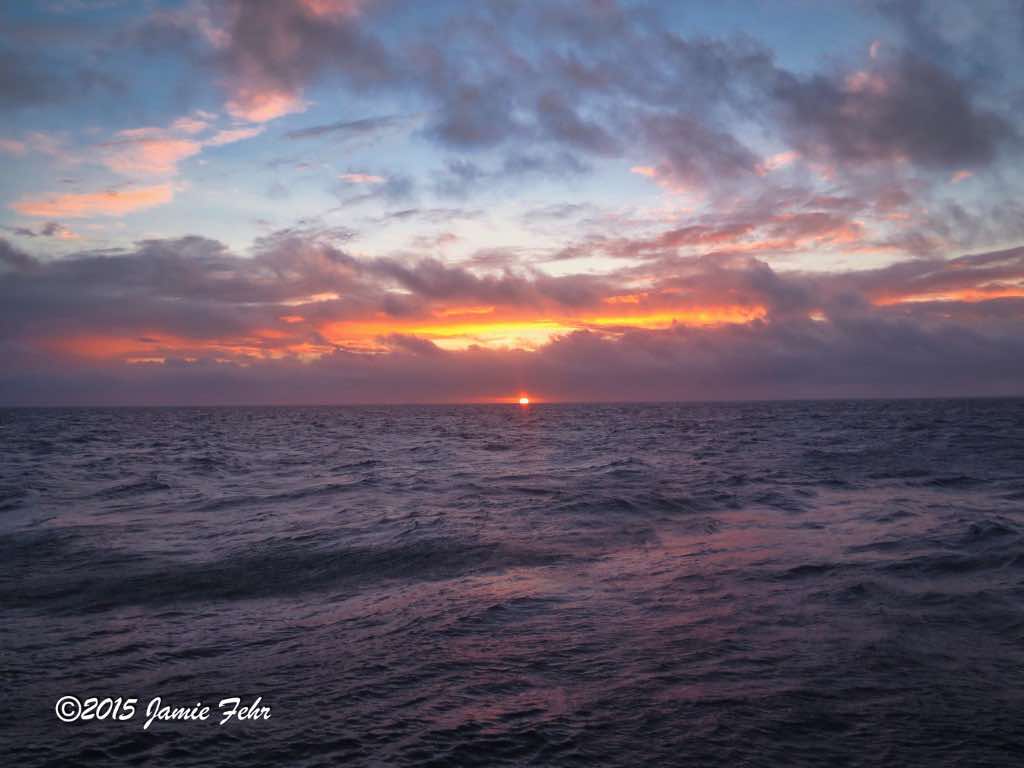
Next month, I will be sharing the long-awaited stories of my travels up and down the Old Telegraph Track, in far northeastern Australia. It’s an adventure that you won’t want to miss!
Till next time, keep dreaming big!
» Jamie
“Never let your memories be greater than your dreams” – Douglas Ivester”
